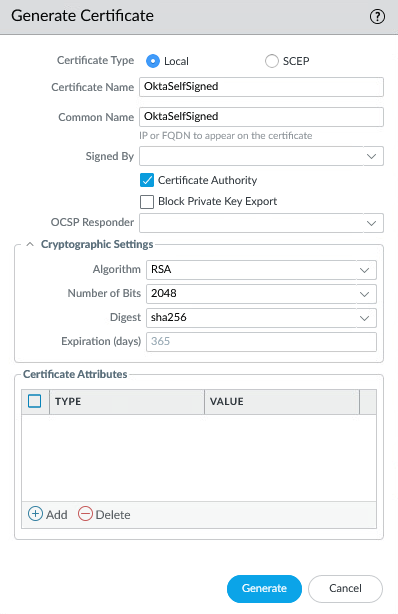
- #GLOBALPROTECT MFA INSTALL#
- #GLOBALPROTECT MFA DOWNLOAD#
On the Advanced tab, select the user group previously created to add to the Allow List. Add the Multi-Factor Authentication Server Profile that was previously created as part of your DUO setup. Check the Enable Additional Authentication Factors box. Enter a Login Attribute of sAMAccountNameĪuthentication Profile to Set User Domain. Navigate to Device > Authentication Profile > Add to create a new profile that consists of the LDAP and DUO Server Profiles that were previously created. Navigate to Device > Certificate Management > SSL/TLS Service Profile > Add to create a profile that references the root CA created previously. You have already followed the previous articles in this seriesĪlthough this capability can be configured without GlobalProtect for HTTP applications, we are going to focus on non-HTTP applications to highlight the GlobalProtect app's role in the authentication prompt process. In testing so far MFA is working very well.NOTE: This article assumes the following: But thought I would post this if its of any use to anyone else. If for some reason SAML goes down, I can use some other backdoor access through Azure to get access to Panorama.Īnyway, sorry if I was a bit wordy. Also I didn't like the idea of having a VM proxy with an MFA extension installed. In the end I chose SAML because of the ease of configuration. (One thing to note that I didn't find in any documentation is that when you do a sequence the palo treats it as an authentication profile, meaning that you can go to the authentication profile on the globalprotect gateway and/or portal and choose the sequence there). We had previously been using ldap and I had an authentication sequence with local fall back. This means you can't have fall back to local. One advantage of radius is you can add the radius authentication profile to an authentication sequence while SAML you cannot. Previously each firewall had its own FQDN (this is under portal, agent, external gateway). Since we have 3 palos I did have to change the FQDN on all 3 to match, since in Azure you can only have one entry. You'll also need to create a conditional access policy within Azure for the GlobalProtect Enterprise App with sign in frequency set to something like 1hour. You then build an authentication profile that points to the server profile and on the gateway used for globalprotect you change the authentication profile to the saml profile you created. #GLOBALPROTECT MFA DOWNLOAD#
Once you follow the configuration in the link above, you download the xml file and import it into the Palo under Saml identity provider under server profiles. You would need to create a security group for you globalprotect and add it there under permissions.

I followed the instructions at Basically you would go to Azure active directory and then enterprise applications and search for Palo globalprotect. The alternative which is probably what most do and what we've elected to do is SAML authentication.

You'll have to run a powershell script that's located in this folder - C:\Program Files\Microsoft\AzureMfa\Config and answer the prompts about your Azure tenant ID etc.
#GLOBALPROTECT MFA INSTALL#
One thing to note is that Microsoft has sun-setted the Windows MFA server so you'll have to create a Windows NPS VM and install the MFA extension. On the palo side you would configure a radius server profile and then an authentication profile. You can use a radius proxy VM as an intermediary between the Palo and Azure. There are basically 2 different ways to do this. So instead of using a 3rd party product like Duo or Okta we elected to integrate the globalprotect with Azure MFA. We're in the middle of migrating to Azure and already have Azure MFA working for other areas. If this is redundant or seems pretty basic to many of you, you can ignore my post.

Every now and then when I figure something out that I felt was lacking in some of the documentation I post what I did on Reddit.
PANW - Press Releases & Public Statements. We are not officially supported by Palo Alto networks, or any of it's employees, however all are welcome to join and help each other on a journey to a more secure tomorrow.ĭo you have support related questions? Check the Support Site Company Information This subredditt is for those that administer, support, or want to learn more about Palo Alto Networks firewalls.







 0 kommentar(er)
0 kommentar(er)
